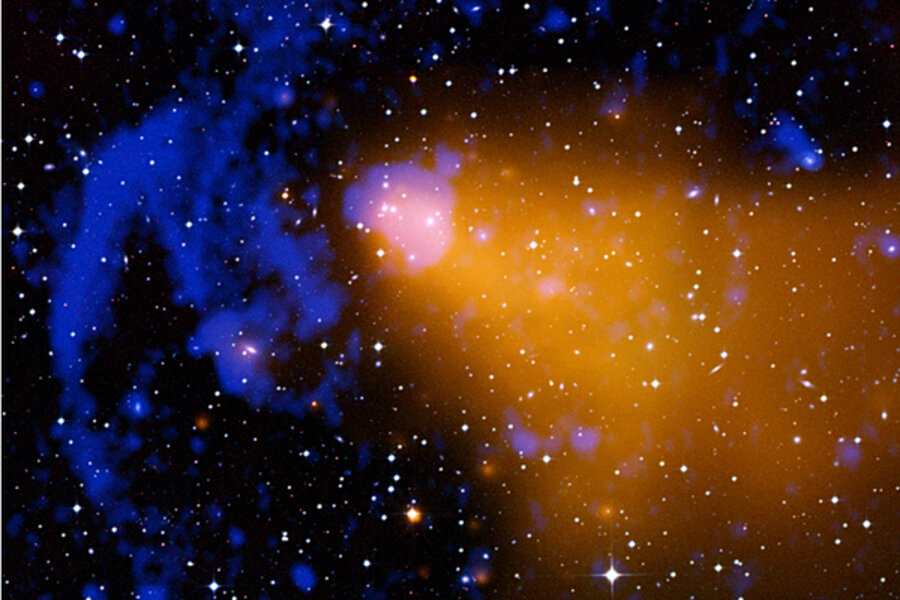Albert Einstein's theory of General Relativity holds up
Loading...
Two different teams have reported using Chandra observations of galaxy clusters to study the properties of gravity on cosmic scales and test Einstein's theory of General Relativity.
Such studies are crucial for understanding the evolution of the universe, both in the past and the future, and for probing the nature of dark energy, one of the biggest mysteries in science.
This composite image of the galaxy cluster Abell 3376 shows X-ray data from the Chandra X-ray Observatory and the ROSAT telescope in gold, an optical image from the Digitized Sky Survey in red, green and blue, and a radio image from the VLA in blue.
The "bullet-like" appearance of the X-ray data is caused by a merger, as material flows into the galaxy cluster from the right side. The giant radio arcs on the left side of the image may be caused by shock waves generated by this merger.
The growth of galaxy clusters like Abell 3376 is influenced by the expansion rate of the universe - controlled by the competing effects of dark matter and dark energy - and by the properties of gravity over large scales.
By contrast, observations of supernovas or the large-scale distribution of galaxies, which measure cosmic distances, depend only on the expansion rate of the universe and are not sensitive to the properties of gravity.
More: http://www.chandra.harvard.edu/photo/2010/a3376/
Kim Arcand blogs at ChandraBlog
View all of the ChandraBlog posts on the Monitor.
Add/view comments on this post.
==
Related
Scientists challenge General Relativity. And Mr. Einstein wins again.





